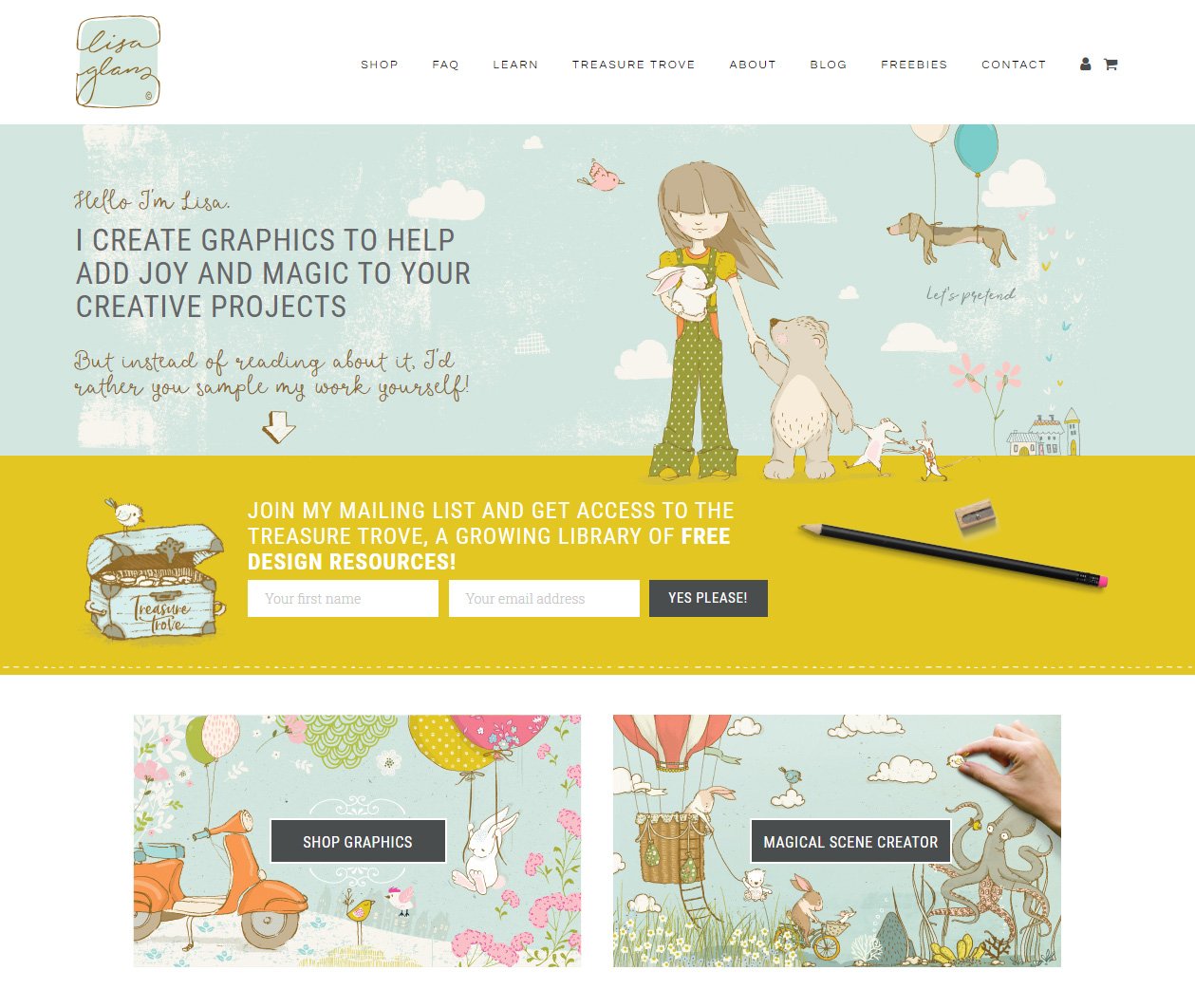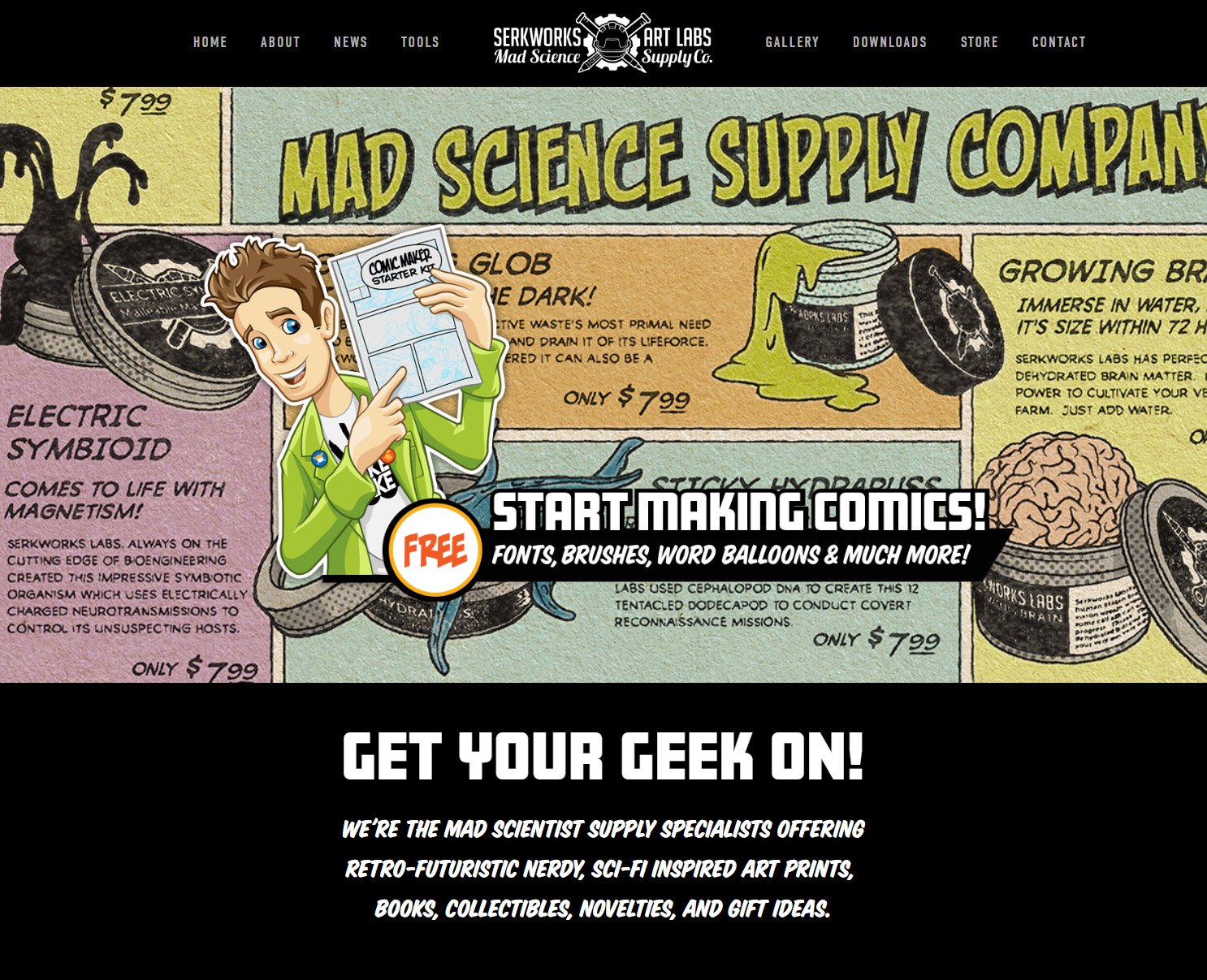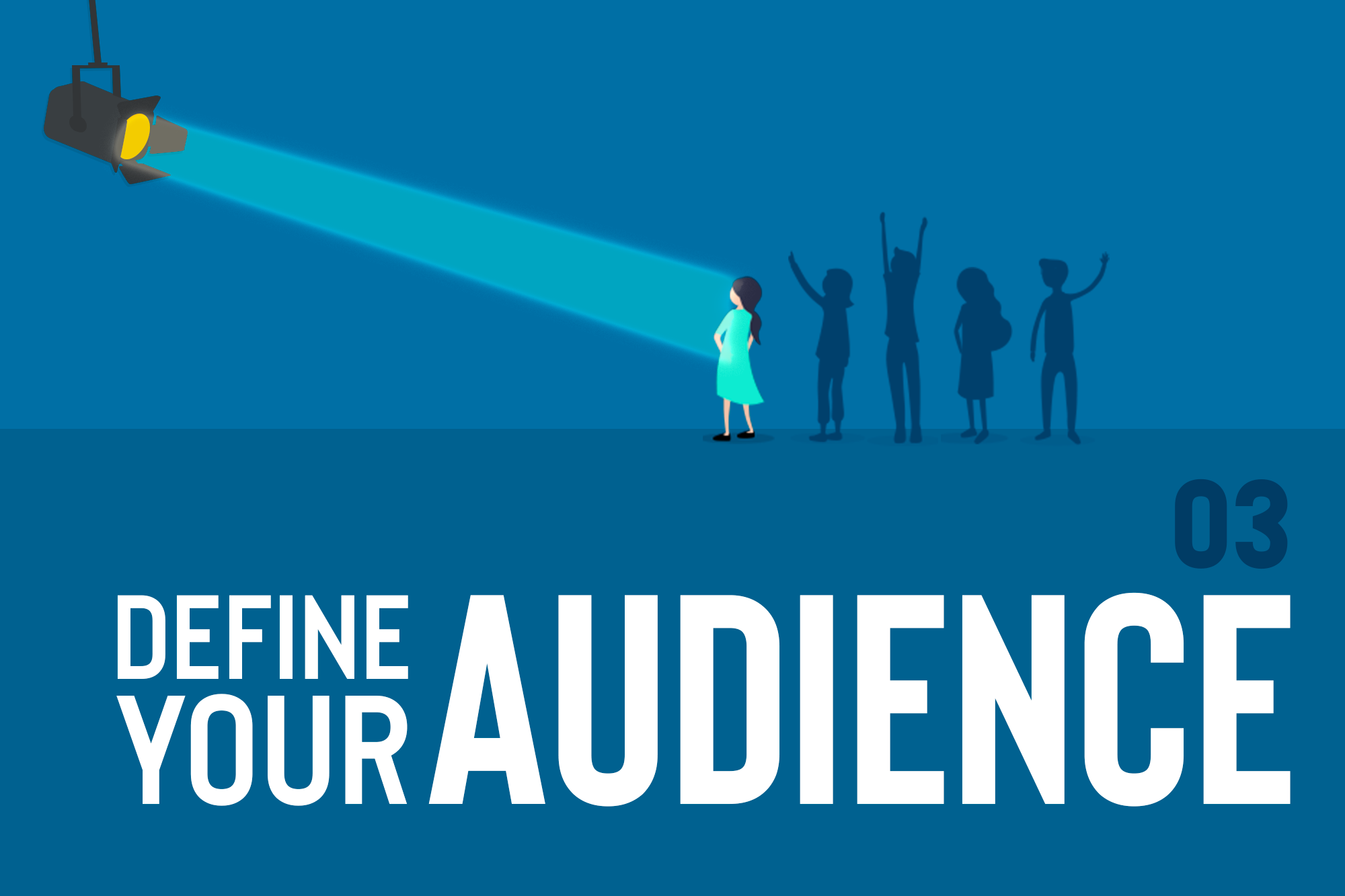You’ve already found out from our previous artiles how to define your talent to get a good idea of what you should to create and sell; then established who your audience is to help you pitch the product correctly, and maximise your sales. The next step is to create a brand to market your products through - so (rubs hands together), let's get started!

"As of today, it’s been 3 years since I left my day job and more than 12 years of creating design products and fonts for sale. You get to meet new amazingly talented people, you learn a lot from the design community and of course you give away a lot too - not just products, but knowledge and inspiration to others."
Elena Geonva - My Creative Land
Leading font designer
Huge Opportunity
Many new designers miss out on this step, but if you do, you’re losing out on a huge opportunity. If you don’t have a brand to sell your products through, every time you sell a new product or service you’ll be starting from square one with the customer. Following are a few very compelling reasons why you should build your own brand.
The Benefits of Building A Brand
-
Resonate With Your Audience
It helps your audience and community connect with you and your products, by giving your products and services a consistent personality.
-
Brand Equity
It allows you to build ‘brand equity’ (a reputation for product and service quality which will help sell future products).
-
Targeted Positioning
It helps you to position yourself within your market to meet your own goals and aspirations.

Key Takeaway
Creating a consistent ‘brand identity’ for yourself (logo, tone of voice and underlying style for your work), will help your audience connect more easily with you and your products - encouraging recognition, loyalty, trust, and increasing sales.
How Do I Define My Brand?
As with defining your audience, there is a set of simple easily answered questions which will help you define your own brand.
Answer the following:
-
What's Your Main Product Or Service?
What kind of products or services will you specialise in?
-
What Differentiates You?
What are your USP’s - or ‘unique selling points’, what do you do well that your competitors don't?
-
What Are Your Main Goals?
To be the best at this or that, provide the best this or that etc.
-
What Do You Believe In?
What are your values? (If you didn’t do it for the money.)
-
What's Your Personality?
E.g. inspiring, passionate, fun, quirky.
-
Who Are Your Main Competitors?
Track them down then think about how can you sit comfortably within your target market - yet clearly differentiate yourself.
-
What’s Your Visual Styling
Think about how would you like to be seen to best engage your audience - corporate, whacky, professional etc.
-
What's Your Tone Of Voice?
Think about the language your audience use, are there words and phrases - a style of writing that you know they would resonate with?
Brand Example - Lisa Glanz
No digital product designer has branding wrapped up quite as well as Lisa Glanz - designer of super cute and fantastically innovative illustrated products! Her brand has bags of character and is carefully targeted towards designers interested in cute and beautiful illustration!
'I have a rich inner world filled with many interesting little characters I adore bringing to life which you’ll find in many of my products and designs - I’m a bit of a geek when it comes to detail. All my graphic goods are made with the utmost care and pride, whether it’s for a personal note you’re making for a loved one, a client project or your own business you’re so passionate about.'
Lisa Glanz
Research
Before you define your brand, thoroughly study your target audience (see the research section in our audience article).
We also recommend you research the following:
-
Brands In Your Target Market
Look at the popular product creators in your main field (go to your product section on Design Cuts and see the author links under the products). Visit their store’s, websites and social presence - look at their products and their brands. Follow them on social media to get a feel for their tone of voice, and how they are engaging their audience with their brand.
-
Possible Brand Direction
Try and get a feel for common elements between the brands which might resonate with your target audience, both in terms of tone of voice and visually. Anything which might influence your brand and give it direction (remember - be careful to make sure you still give your brand its own distinct identity, even if you're taking inspiration from others!).
Your brand should: sit comfortably within your target market, be easily identifiable as a brand which sells your type of products, and also have differentiation - be different enough that you are unique and have your own distinct personality, which isn’t too much like any of your main competitors.
How To Use Your Brand
Once you’ve defined your brand, use it as a guideline in creating and refining your own brand identity.
Here are some of the things your brand definition will help guide you with:
-
Your Brand’s Visual Styling
- Logo and colours all the way through to your website & social
- Ensure it represents who you are and is differentiated from your competitors - after all, it will be hard for you to look new, unique, and interesting, if your brand looks identical to your main competition!
- Ensure visual consistency across all ‘brand touchpoints’ (anywhere your audience may experience your brand, such as on your website, Facebook or Instagram) - keeping consistent will help you build strong recognition with your audience and build brand equity.
-
Your Brand Tone Of Voice
- Defining who you are, as well as who your audience is, should help you come up with a shared language to use in your marketing materials which will resonate with both you and your audience. There’s no point in sounding like your in a business meeting if you’re selling cool grunge patterns, your audience just won’t get it!
-
Your Product Branding
- Your products design style can be influenced by your brand. Having an overall recognisable style to all your work can help you build very strong recognition with your audience. It will also build your brand equity.
Brand Example - Serkworks
Just to show you that there is a design home out there for everyone, where you can explore your wildest fantasies of product creation - we give you, the wonderful Serkworks!
Scott at Serkworks has taken branding to the next level, branding himself as the mad scientist creating whacky yet useful retro-futuristic, comic-inspired resources! To complement his digital products he even sells physical products, and puts out regular YouTube content to help his followers!
'Scott Serkland was once a mild mannered illustrator and designer. That is until the effects of an unfortunate incident involving a microwave oven and a can of processed squeeze cheese changed his life forever. Now Serkland burns the midnight oil in his underground factory/laboratory creating robots, aliens zombies, and other imminent threats to humanity in his never ending quest to take over the world.'
Scott Serkland - Serkworks Art Labs
Don't just think job done: the most successful brands are constantly being refined, tweaked and improved ('reframed') to be more competitive!
Reframe Your Brand
All brands keep a careful eye on their brand and their position in their target market. They make very small, careful changes to improve their brand to help it compete better. This process is called ‘reframing’. You may have noticed big companies such as Google making small changes to their logo and branding over time - not so big as to lose their identity (and risk damaging or reducing their all-important brand equity), but just enough to modernise and position themselves more competitively against their competition. Keep working at it, polishing your brand and building that all-important brand equity to help boost your sales!

Define Your Brand Action List
Work through the following points and make notes in a Google doc or similar to use later.
- Use the brand definition questions.
- Research creators brands within your target product category and aesthetic.
- Create a logo and select a brand font which you think will resonate with your audience (you can use this in your product presentation and marketing to give your brand its own unique identity).

About The Author
Matt Slightam is Co-founder and creative director at Design Cuts. He's creatively directed some of the biggest digital design products on the market - working with many leading designers such as Shoutbam, Trailhead, Latino Type, Pretty Little Lines, ROHH, Julia Dreams and many more.
Matt puts out regular useful content to help designers via Instagram, and can be found at @mattslightam





Very Good
I am super pleased to hear you found this lesson useful! :)
Interesting! I’ve noticed that illustrators and digital artists in my current arena (painterly, traditionally inspired digital art, children’s or whimsical illustrations) generally just use their name in a handwritten style as their logo and maybe one of their iconic illustrations displayed alongside it (if anything). But a lot of graphic designers seem to make a completely new company name (like Shoutbam and the Artifex Forge). I wonder if I move into graphic design and lettering if I’d do better coming up with a separate brand identity with a funky name too lol
Hey Jo,
Thanks so much for leaving us a comment.
You are absolutely right -there is certainly a variety of branding techniques out there and I would imagine it could be tricky to choose! I am pleased to say we have a Brand Design day on Thursday for our 2nd birthday week and will have a group of the worlds greatest brand designers coming to talk with you live :)
You can check out and sign up for the upcoming sessions here:
https://www.designcuts.com/learning-hub/sessions/
Very Nice
Woohoo we’re so happy that you love it Atipu!